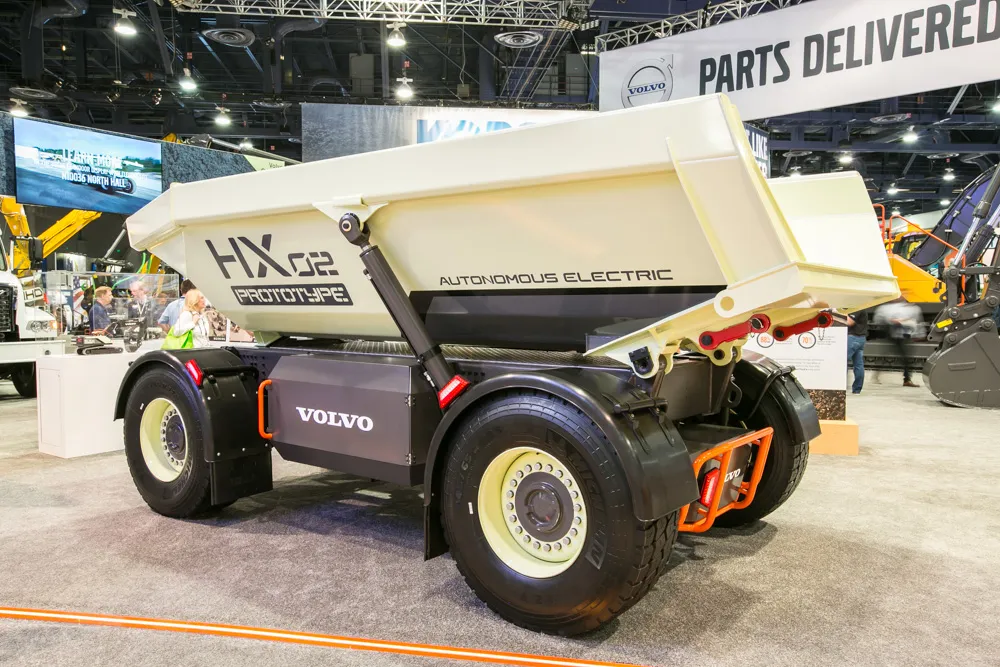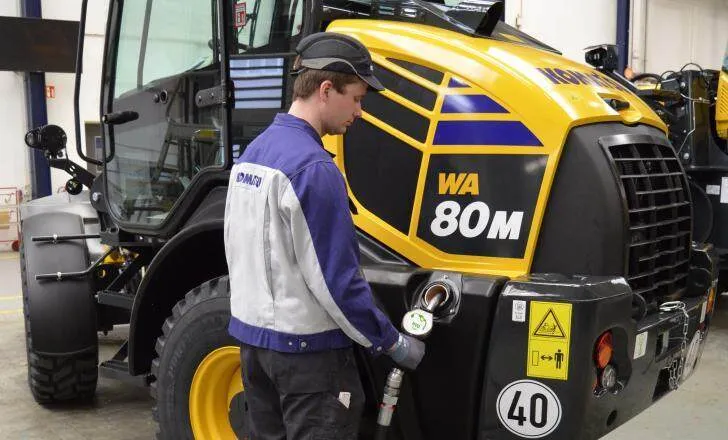
Construction is the third highest sector for producing greenhouse gas emissions, behind the oil and gas sector and chemicals.
Construction accounts for 30% of global greenhouse gas emissions – and around 76% of these come from fossil fuel combustion.
So there is much work to be done to reduce the carbon footprint of the sector, according to senior
But there is also much work underway, said Dave Ross, vice president of advanced technology at Volvo Construction Equipment, during a seminar at CONEXPO-CON/AGG in Las Vegas.
Part of Volvo’s attempts to move the sector forward is its prototype all-electric autonomous hauler, the HX01. Next year, Volvo CE hopes to demonstrate the future by having a driver in Spain operating the vehicle - which will be in a quarry in Sweden.
No one specific subsector of construction produces the most greenhouse gases, according to Bryan Staley, president of the Environmental Research and Education Foundations. Highways-street-bridge construction produces around 14% of the construction sector’s total emissions. Residential work produces around 18% and civil engineering another 13%.
Staley urged the audience at the seminar to take a deep look at their corporate procurement practices, supply chain companies and logistics operations to come up with a detailed understanding of from where emissions originate.
A policy to reduce corporate emissions should be based on data that includes transportation costs and distances, products that go into the manufacture of building material and the use of recycled content: “When it comes to reducing emissions, using national standards and benchmarks are not always the most useful yardsticks.” Take each construction site and project on its own merits, he said.
An example of this is California’s high-speed rail project, a $64 billion link joining San Francisco to Las Vegas. Around $3 billion has been tendered for work underway on just under 200km of track, including bridges. When finished in 2029, trains will travel around 350kph – a long overdue project for the US, said Margaret Cederoth, sustainability manager for the California High-speed Rail Authority. She also heads up a team engaged in the corporate sustainability for WSP Parsons Brinckerhoff’s US transportation company.
To capture some of the work of the rail project, contractors have had to meet environmental conditions, such as using machines that are only Tier 4 Final-accredited and ensuring that 100% of steel and concrete will be recyclable. The trains themselves will be all electric. “It’s a good foundation for construction sustainability,” she told the audience.
But, she noted, there is also the challenge of collecting data on-site about use of equipment and understanding that data to use the machinery in a more sustainable and environmentally-friendly way.









